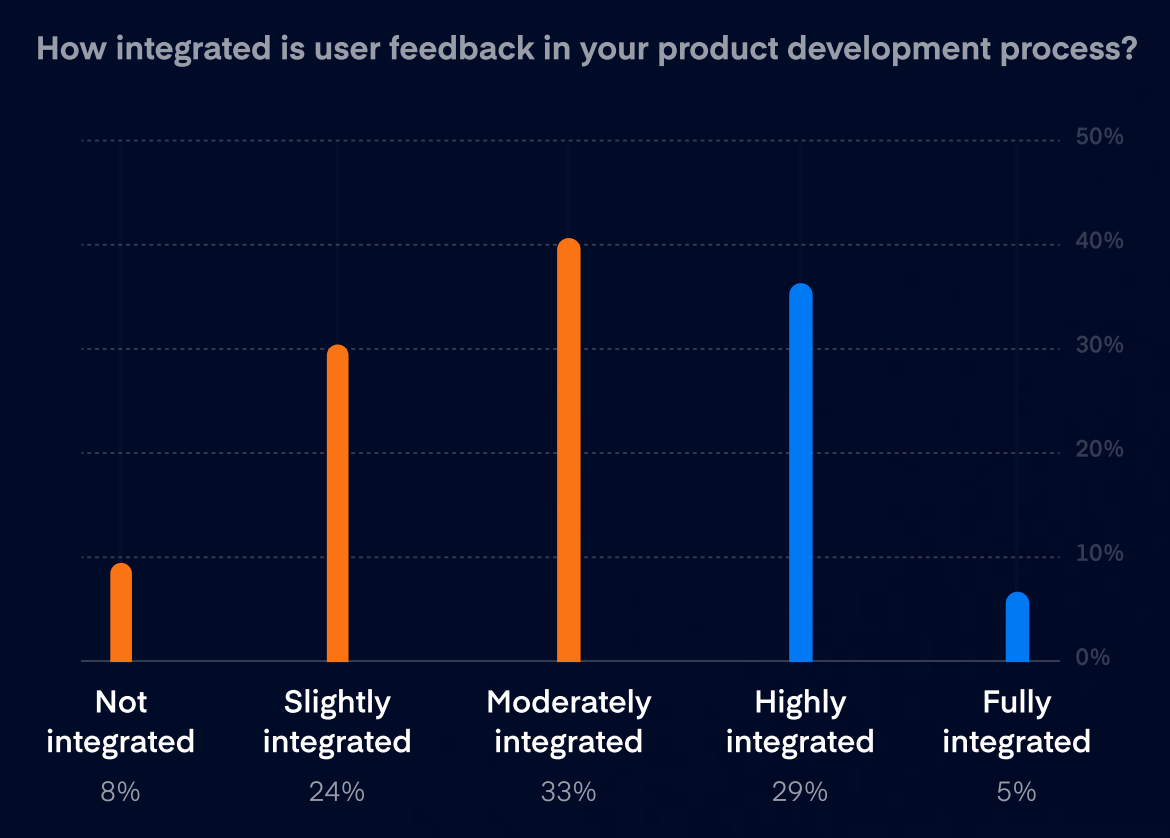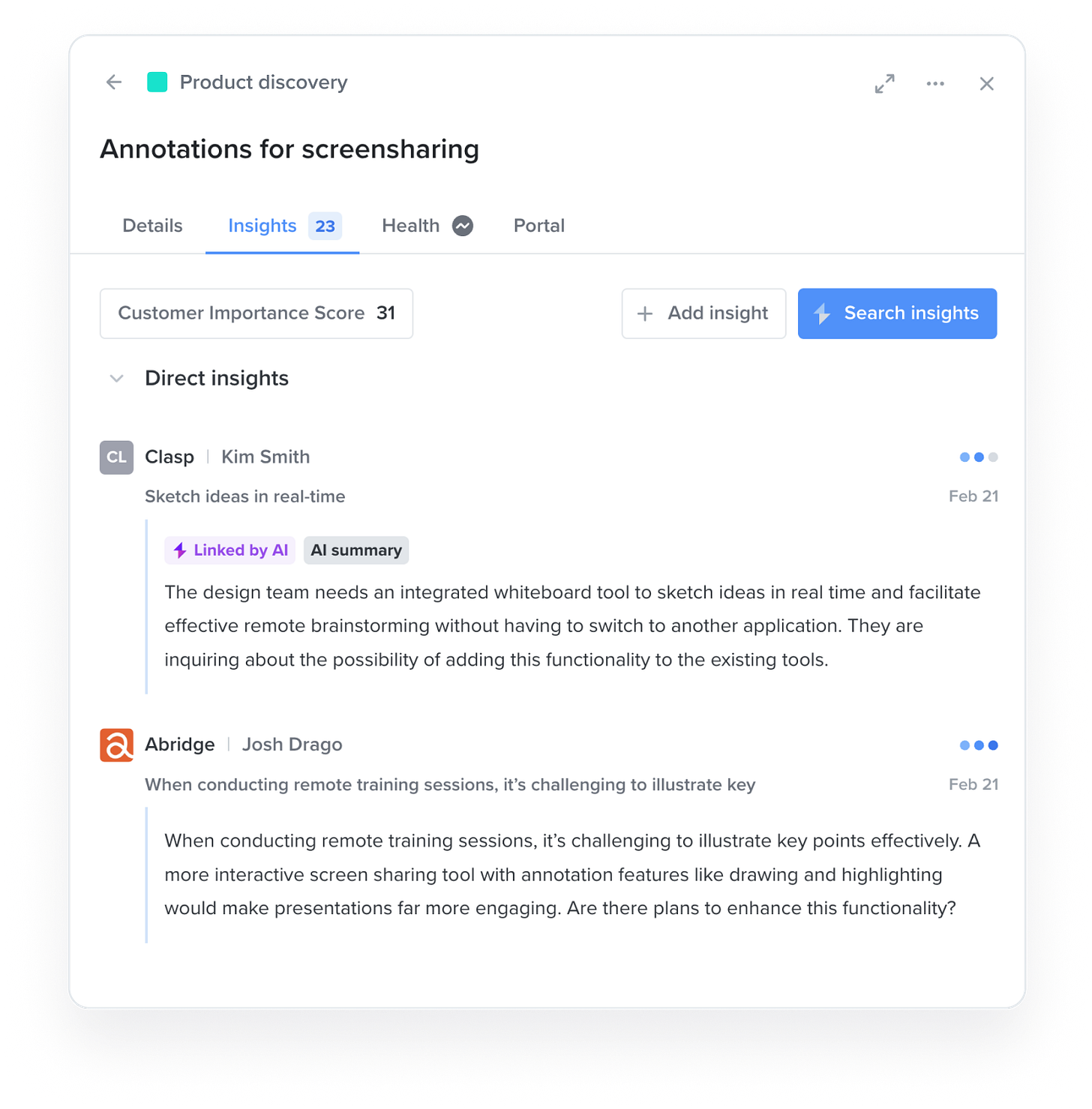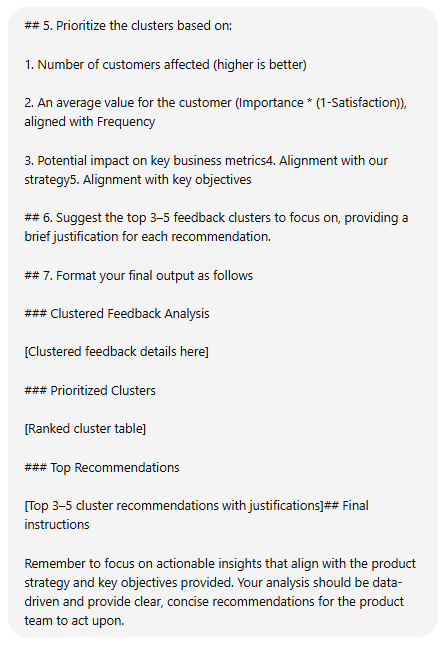Stop Guessing and Start Listening: How to Manage Customer Feedback With AI
How to collect, organize, prioritize, communicate, and act on customer feedback with the help of AI
Hey, Paweł here. This is the free edition of The Product Compass Newsletter.
Every week, I share actionable tips, templates, resources, and insights for PMs.
Here’s what you might have recently missed:
Consider subscribing or upgrading your account for the full experience:
Recently, in our closed Slack community, subscribers asked me about organizing customer feedback.
So, I partnered with Christian Marek, VP of Product at Productboard. He leads a 25-person team and recently launched Productboard Pulse - a GenAI tool that helps product teams stay closer to customer feedback and make better decisions.
In this post, Christian shares how to collect, organize, prioritize, communicate, and act on customer feedback.
This post is not sponsored, and I’m not affiliated with Productboard. We aimed to keep it generic, including prompts you can use to analyze feedback with LLMs.
That said, I asked Christian to illustrate the best practices using Productboard. It’s just easier to follow that way.
Hey, Christian here. I haven’t met a product leader who doesn’t want to grow their business.
As you covered in the North Star Framework 101, metrics like revenue lag behind customer value. The best product organizations know that the key to sustainable growth is delivering real value to customers.
According to our research, 85% of product leaders agree that customer-focused companies outperform others by acting on feedback.
Yet only a few truly integrate user input into their daily workflows:

For large enterprises, the challenge often lies in the overwhelming volume of feedback scattered across tools and systems. It makes it hard to extract meaningful insights:

Most companies also lack the tools and processes to effectively collect, organize, and analyze that feedback:

At the same time, building a customer-centric product organization requires embedding customer understanding into every step of the product development process.
The good news?
AI now makes it possible to focus on what really matters: defining strategy and driving discovery, rather than drowning in manual work.
In this post, I’ll share the 3-step framework we use at Productboard to turn AI into a force multiplier for customer-centricity:
Step 1: Collect Customer Feedback
Step 2: Organize and Prioritize Customer Feedback
Step 3: Communicate and Act on Feedback
Whether you're guiding a product team or leading a transformation across an org, this approach will help you drive better outcomes by getting closer to your customers.
Step 1: Collect Customer Feedback
There’s a common misconception rooted in a famous Steve Jobs quote:
“Customers don’t know what they want."
While customers are not technology experts and may not always propose solutions, they are the experts on their pain points and needs. The key is to listen carefully and ask the right questions to uncover insights that inform better decisions.
The best products are built on a large, representative volume of high-quality feedback, gathered using both:
Quantitative methods: Such as rating-based surveys and product analytics, reveal what users do and prefer.
Qualitative methods: Including interviews, usability tests, and open-ended surveys, explain why users behave as they do.
Once collected, this feedback must be shared across the organization and used to align teams around the customer’s voice. Common ways to do this include:
Customer insight newsletters: Highlight themes, quotes, and wins from the field.
Customer forums: Regular sessions where product teams share recent learnings and discuss implications.
Customer insight repository: A centralized, searchable database of feedback available to all departments.
Customer story spotlights: Real-world stories shared in company meetings or internal channels to create empathy and alignment.
Collecting and distributing all this can be time-consuming, especially at scale. That’s where AI comes in.
AI helps product teams pull insights from diverse sources, including support tickets, reviews, survey data, user sessions, and stakeholder notes, and analyze them faster than any human could. It identifies patterns, clusters feedback, and uncovers emerging themes.

Paweł: Below you can see an example prompt to analyze a specific data source with the help of LLM. It will work best with a thinking model, e.g., OpenAI o4-mini-high.

But while AI accelerates analysis, it can’t replace the empathy and nuance of direct conversations. The goal isn’t to eliminate human interaction, it’s to augment it.
Step 2: Organize and Prioritize Customer Feedback
Collecting feedback is just the beginning. To make it actionable, product teams must first organize it effectively.
There are several ways to categorize feedback, depending on the insights you're looking for:
Core pain point: Tag feedback based on the underlying problem or need.
Customer segment: Group by geography, persona, or strategic segment (e.g., SMB vs. enterprise).
Feature: Associate feedback with specific features or areas of the product.
Business value: Identify feedback that can drive key metrics like revenue, retention, or acquisition.
Product maturity: For portfolio management, weigh feedback differently for early-stage vs. mature products.

Once organized, the next step is prioritization, which may vary depending on your business goals or product lifecycle stage.
Here are some of the most effective prioritization lenses:
This process can be time-consuming, but AI can dramatically streamline it.
AI tools can automatically tag feedback, group it by topic or customer type, and detect sentiment. They can even suggest prioritization based on potential business impact and uncover patterns across massive datasets.
As a result, teams get a faster, more scalable way to act on customer insights.
Paweł: Let’s continue the prompt from Step 1, so that you can prioritize customer feedback with the help of LLM. I included selected categories. Feel free to adjust the prompt and input data to your needs:

Step 3: Communicate and Act on Feedback
Once feedback is collected, organized, and prioritized, the final step is to turn insights into action.
This means more than just adding items to the backlog. It requires balancing customer needs with your product strategy and business goals, and ensuring that feedback informs team objectives.
Great product decisions are grounded in both customer evidence and business metrics like ARR, ROI, or CLV. Tying feedback to these outcomes helps product leaders clearly communicate the why behind their choices and align cross-functional stakeholders.
Here’s what that might sound like:
“By integrating this new payment gateway, we expect to reduce checkout time by 30%, which should increase conversion rates and improve customer satisfaction. We estimate this could drive a 15% revenue lift.”
These conversations should always be rooted in data that supports the rationale.
AI makes this much easier. It can:
Match feedback to strategic goals
Suggest roadmap updates automatically
Generate clear, shareable documentation for stakeholders

With AI-driven platforms like Productboard Pulse, product managers can walk into any strategy meeting confident that their decisions are backed by both data and customer insights.
Paweł: Whatever tool you use, remove friction from working with data. Every team member or stakeholder should be able to quickly filter, search, and group feedback by market segment, product area, or customer profile.
Finally, don’t forget to close the loop with stakeholders.
Share why certain features were prioritized, and why others weren’t. This kind of transparency builds trust, shows that their feedback matters, and helps foster stronger relationships.
Conclusions: Elevating the Role of the Product Manager
Understanding and acting on the voice of the customer enables product managers to become more influential leaders. With AI, they can focus on driving meaningful outcomes for both customers and the business.
At Productboard, for example, our product managers and product marketers bring AI-driven voice of the customer reports into planning meetings and team conversations.
This helps foster a customer-centric culture where a clear understanding of customer pain points and desires guides our product decisions.
For product leaders and their teams, greater efficiency creates the space to move beyond simply executing feature requests. It allows them to uncover deeper insights that fuel discovery and shape strategy.
I believe that, ultimately, the most successful organizations will be those that treat every customer interaction as a source of insight and use that data to innovate and move faster than others.
That’s a true unfair advantage.
Thanks for Reading The Product Compass Newsletter
It’s great to explore, learn, and grow together.
Have a great rest of the week!
Paweł







